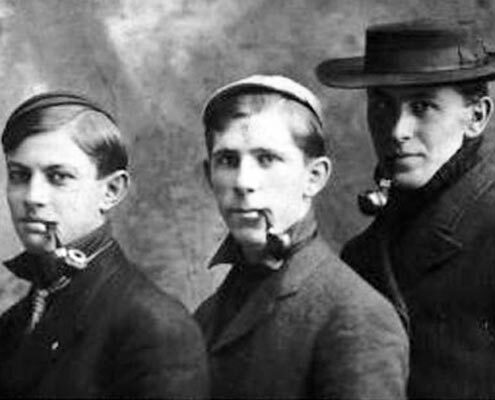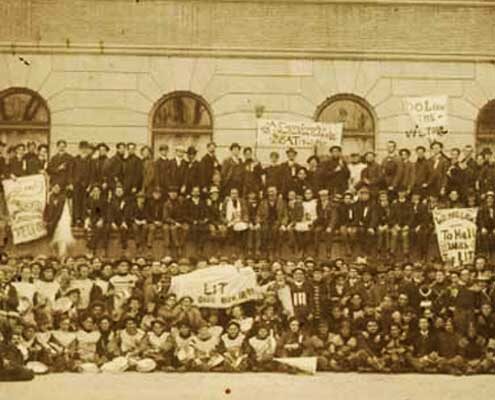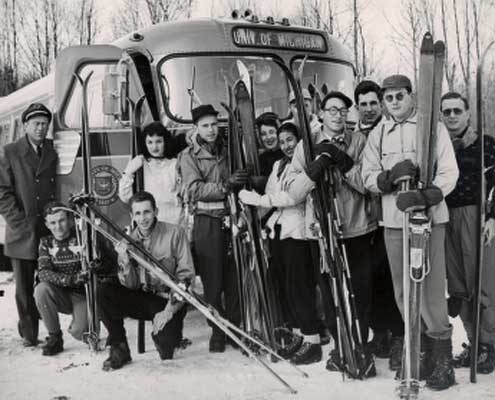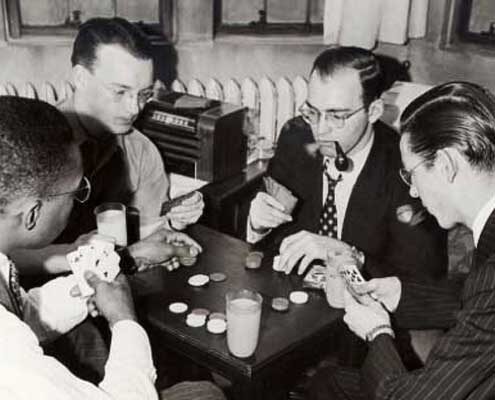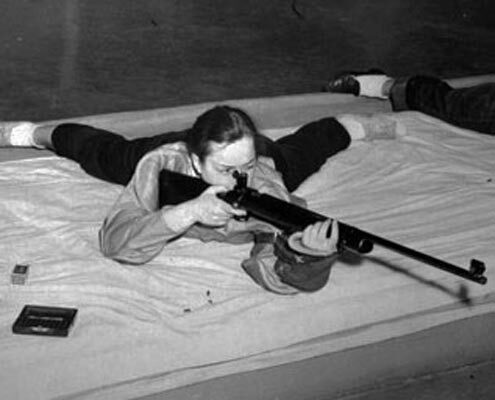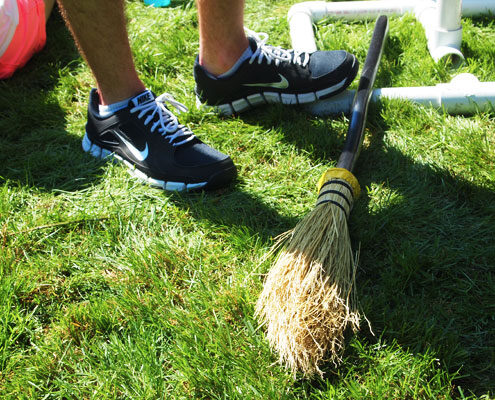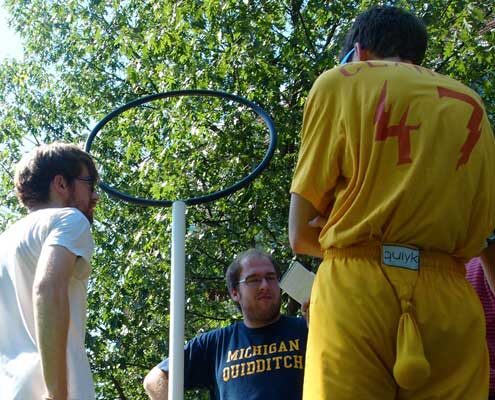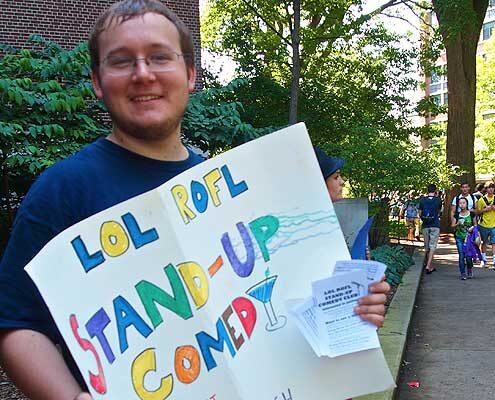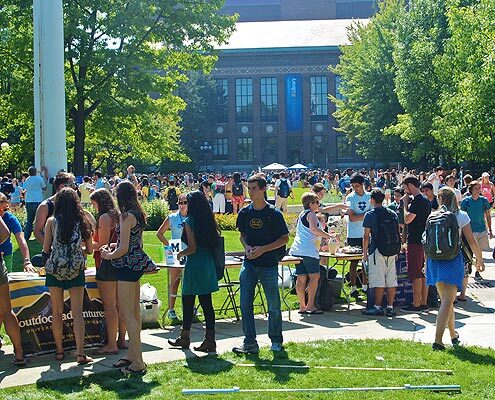When a student club at the 2013 Festifall advised interested members to “BYOB” for an upcoming meeting, the second “B” in this four-letter directive did not refer to beer but to a broom. Bring your own broom.
And no, it wasn’t for the Custodial Club or the Wolverine Janitor Wannabes. It was, in fact, for one of the newer student clubs on campus–Michigan Quidditch.
But before the snickers and giggles begin about the club (formed in 2010 and based on the sport from the Harry Potter novels), it should be noted Michigan Quidditch can boast something few, if any other, Wolverine teams can: It has never lost to Ohio State.
The club’s table on the Diag drew a lot of stares from students and an equal number of questions—including one certified head-scratcher.
“People ask, ‘Is this real? Do you guys actually fly?’” club member Matthew Oates says.
Well, just in case the question has to be answered, the players actually run around with a broom between their legs. They play on a field roughly the size of a basketball court trying to throw deflated volleyballs through three hoops attached to poles.
The club plays pickup games at Nichols Arboretum on Sundays and participates in tournaments around the country.
“Anyone can come play,” says Oates, a sophomore. “It has physical and social aspects.”
Count me in
There isn’t much early history of student clubs and organizations at U-M. Most of the student activities in those early years were organized not around interests or hobbies, but by class. The seniors socialized with other seniors, the juniors with juniors, and so on. Later, the subjects you were studying dictated a lot of what you did when you weren’t in class. The “Lits,” the “Laws,” and the “Medics” usually kept to themselves and organized their own dances, parties, and other activities.
The first fraternities, Beta Theta Pi and Chi Psi, were established at U-M in 1845. The first student newspaper, The Peninsular Phoenix and Gazetteer, began publishing in 1857. The Men’s Glee Club was formally organized in 1884, although it is believed it had been performing on campus as early as 1846.
As the student body continued to grow and become more diverse, clubs and organizations on campus blossomed. Today, there are more than 1,200 official student clubs and organizations at U-M, says Stephanie Knight, assistant director for student organizations. The choices are vast: everything from the Abeng Multicultural Council, which creates a more inclusive community within East Quad, to the Zombie Club, which is preparing “on all fronts and aspects, for a potential zombie apocalypse.”
Knight says research shows students involved in clubs and organizations are more likely to graduate on time and feel more connected as alumni. Clubs also can help students with their academics. Business majors can benefit from joining a consulting club, for example, or someone studying social work can join one of the many clubs active in the community.
Clubs also provide an outlet for students to relieve stress after a tough week of classes, Knight says. “The weekend comes and they can go play Ultimate Frisbee.”
In short, clubs and organizations add value to a student’s college life. “They help students connect with one another, but also connect with the University,” Knight says.
To become official, a club must register on the university’s Maize Pages, have at least 10 student members, have a constitution that outlines how the club will be run, and agree to comply with U-M policies. Official clubs enjoy many benefits, including marketing and training support from the Center for Campus Involvement, facility reservations at a discount, and being able to participate in Festifall.
Join us…
Nearly 500 student clubs and organizations set up tables and booths at Festifall, the annual September showcase during which groups recruit new members. There were religious groups of every denomination, academic and honor societies, performing arts groups, fraternities and sororities, cultural groups, sports clubs, and activism organizations. At any given time, one might come across a belly dancer, some guys beating on drums, someone dressed as a penguin, and a large telescope pointed at the sun.
Most of the tables were decorated with photos of the group’s activities, flyers, and usually some kind of giveaway. Students for Life handed out candy. Two tables away, Students for Choice handed out condoms. Students for Education Reform kept the peace between the two groups.
On this exceptionally hot September day, the Society of Physics Students enjoyed unprecedented popularity. That’s because they were using liquid nitrogen to make chocolate ice cream.
“I guess it’s our shtick,” says senior Patton Doyle. “You can see the ebb and flow at our table depending on if we’ve just made a new batch of ice cream.”
He says most of the physics majors already know about the club so the Festifall is a good place to recruit non-majors to join.
At the next table over, Stephen Kunselman, the energy conservation liaison for U-M’s Plant Operations, doesn’t seem worried by the physics guys’ large silver tank of liquid nitrogen and the large clouds of white smoke.
“They bought me off,” Kunselman says, enjoying a bowl of ice cream. “It reminds me of Dairy Queen.”
In between bites, he distributes thermal cards and reminds students to check room temperatures and contact Plant Operations if “something is out of whack.”
Something for everyone
Knight says new clubs pop up every year. Festifall 2013 included 104 new organizations.
When high school buddies Austin Elliott and Parker Latshaw arrived on campus last year, they went looking for the fly fishing club.
“We said, ‘If no one else is doing it, then we’re going to do it,’” says Elliott, a sophomore.
No one was doing it, so the two–along with friend Chad Kelsey–started the Fly Fishing Club at the University of Michigan this year. The founders, dressed in khaki fishing vests and holding long fishing poles, handed out flyers to passing students. The group is planning fishing trips to Northern Michigan and wants to represent U-M at college tournaments around the Midwest.
The club already has hosted some casting and fishing lessons on the banks of the Huron River, which they deemed a success.
“We had 25 people come out and everybody caught something,” Latshaw says.
Senior Tim Pow founded the Cubing Club for those who like to solve puzzle cubes. “It didn’t exist, so I formed it,” he says.
The club welcomes members at all skill levels, and meets weekly to solve cubes and trade pointers on how to do it quicker. They recruit new members through events like Festifall, the club website and Facebook page, and word of mouth. “I’ll solve a cube while riding the bus,” Pow says. “That’s a great conversation starter.”
One student club with probably the greatest notoriety is the Squirrel Club. The website hercampus.com named it one of the “15 Craziest College Clubs.” Huffington Post College recently named U-M one of the colleges “most obsessed” with squirrels.
“We’re one of the biggest clubs,” says club VP Jenna Scorza. “We have lots of students. We have alumni bring their children to our events, and we have 80,000 names on our mailing list.”
The group meets once a week to feed the squirrels on the Diag. Scorza says it’s a good way to get out in nature. But she also knows the club is a frequent target of teasing.
“At student orientation, they bring up Festifall and make fun of the Squirrel Club,” she says. “They say it’s an example of there being a club for everyone. Maybe so, but we have fun.”


